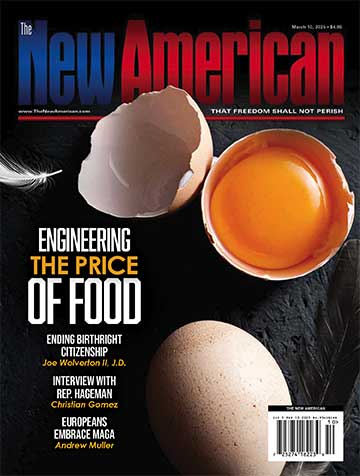
Two measures of the U.S. economy were reported on Wednesday, both of which exceeded forecasters’ expectations. Combined with other measures, the economy is likely to embarrass predictions by the Federal Reserve that it has almost slowed to a stop.
The Atlanta Federal Reserve Bank’s highly-touted GDPNow indicator just moved its first-quarter estimate of the economy’s gross domestic production from 0.1 percent to 0.4 percent. By contrast, the durable-goods and business-investment reports from the Commerce Department for February jumped 0.4 percent and 0.8 percent, respectively, compared to January. Assuming those indicators remain unchanged for the next 11 months, sales of durable goods for the year would increase by nearly five percent, while business investment for the year would increase by almost 10 percent.
Those reports don’t exist in a vacuum. Inflation remains low and is trending even lower, keeping retail prices steady, and in many cases, declining. The CPI (Consumer Price Index) is just 1.5 percent year-over-year while the PPI (Producer Price Index — what businesses pay for their raw materials) rose a scant 0.1 percent in February.
Just these indicators alone are persuading the Federal Reserve to maintain its “hands-off” policy, which is having a positive impact on interest rates. The key indicator is the yield on the Treasury’s 10-year bond, which has dropped from nearly 3.25 percent to just over 2.6 percent in the last four and a half months.
This bodes well for the housing market, which is showing a nice rebound thanks to 30-year mortgage interest rates declining to levels not seen in a year.
The economy has added more than 1.3 million manufacturing jobs since January 2010, the unemployment rate remains near record lows, there are more job openings than people looking for work, and the economy’s total gross output continues its record-setting pace.
In fact, the economy is vastly stronger and more productive than most people realize. The standard measure is GDP (Gross Domestic Product), which is approaching $21 trillion a year according to the Bureau of Economic Analysis (BEA). An alternative measure, also reported by the BEA but ignored by most forecasters, is the “gross output” (GO) indicator developed years ago by economist Mark Skousen. The GO for the U.S. economy (which includes business and supply-chain spending) is closer to $45 trillion.
What’s more, GO is increasing much faster than GDP, growing at an annualized 4.6-percent rate in the third quarter of 2018. Business-to-business (B2B) spending rose even faster, by 5.8 percent.
Then there’s the Purchasing Managers Index (PMI), published by the Institute of Supply Management (ISM). Its Chicago index, released two weeks ago, surged eight full percentage points in February, the largest monthly rise in two years. Its “new orders” component jumped by 15 points.
That explains why job growth remains so strong. Averaging 186,000 new jobs every month over the last three months, the economy has added five million jobs just since January 2017, the beginning of the Trump administration. It also explains why wage growth is surprising forecasters as well: Business owners have increased wages by more than three percent a year. They have also invested heavily in more productive business systems, resulting in productivity growth per employee hour at the highest level since 2010.
It just gets better. New-home housing starts leapt nearly 19 percent in January, with single-family homes jumping even higher, by 25 percent, compared to December.
Stock market investors are enjoying the ride. All three major indexes (the Dow, the S&P 500, and the Nasdaq) are up double-digits for the year and closing in on the all-time highs notched late last year. Specifically, the Dow Jones Industrial Average has rewarded investors with almost a 4,000-point gain since Christmas Eve 2018, and is less than 1,000 points away from its all-time high.
It’s clear where the economy is headed. What is less clear is how the Fed is going to explain its giant miss in predicting it.
Image: matejmo via iStock / Getty Images Plus
An Ivy League graduate and former investment advisor, Bob is a regular contributor to The New American, writing primarily on economics and politics. He can be reached at [email protected].
Related article:




